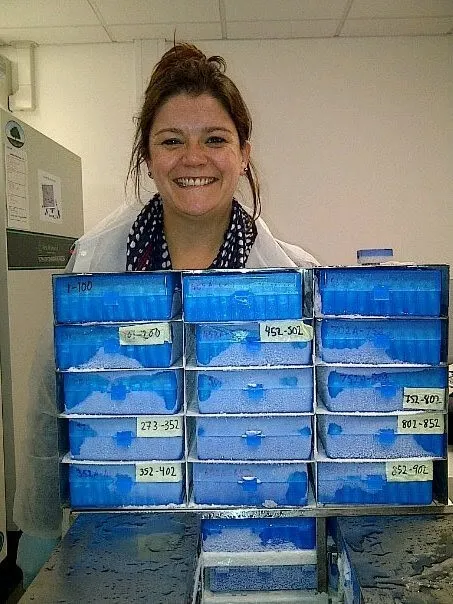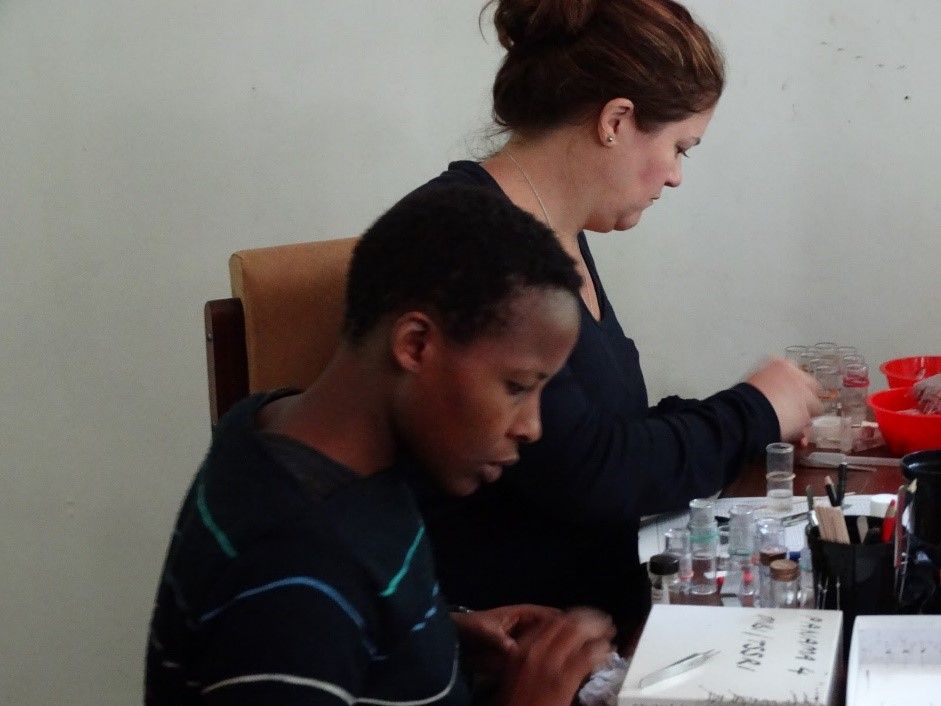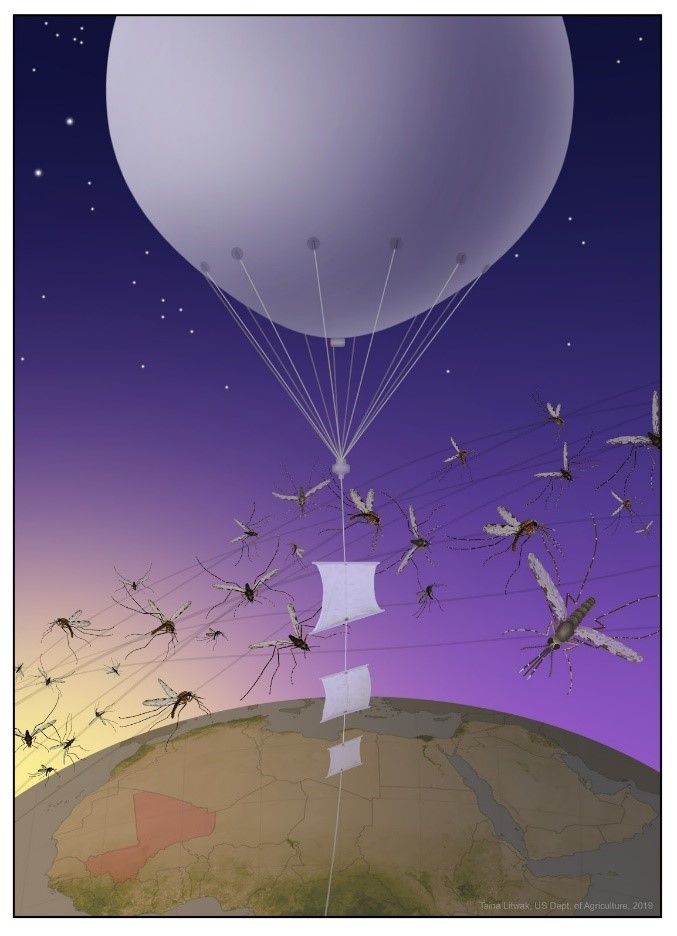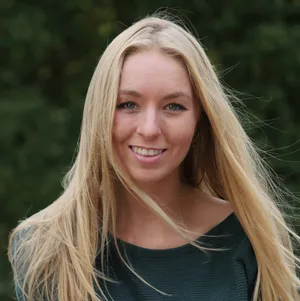NATIONAL MUSEUM OF NATURAL HISTORY
Get to Know the Scientist in Charge of Smithsonian’s 1.9 Million Mosquitoes
We caught up with Dr. Yvonne Linton to talk about what it’s like managing the Smithsonian’s almost 2 million mosquito specimens and trying to determine ones are most dangerous to people.
/https://tf-cmsv2-smithsonianmag-media.s3.amazonaws.com/blogging/featured/Small_insects_pinned_to_white_styrofoam_with_labels..jpg)
Dr. Yvonne Linton became fascinated with insects at a young age. “I was brought up in the Middle East, and there were always weird bugs landing everywhere,” she recalled.
That curiosity never diminished. Years later, she found herself in a lab, trying to figure out why some insects look nearly identical but carry completely different diseases. “It’s like picking through puzzle pieces to work out which are the important ones and which are not,” she said.
Now, Linton is curator of the Smithsonian’s National Mosquito Collection and the research director of the Walter Reed Biosystematics Unit.
We caught up with her for “Meet a SI-entist” to talk about what it’s like managing almost 2 million mosquito specimens and trying to determine which ones are most dangerous to people.
What is the Walter Reed Biosystematics Unit?
The Walter Reed Biosystematics Unit focuses on the identification of arthropods — primarily mosquitoes, ticks and sand flies — that can transmit diseases to soldiers and civilians.
We’re part of the US Army, but we have been officially housed in the Smithsonian’s National Museum of Natural History since 1985. During the Vietnam War, more soldiers died from mosquito-borne diseases than anything else, so the military made strong connections with entomologists at the Smithsonian. Their collection of mosquitoes was an invaluable resource for working out which species were causing malaria, yellow fever, dengue and other diseases that were plaguing US soldiers.
When the US Army and the Smithsonian started to work together in the 1970s, the National Mosquito Collection was 200,000 specimens strong. Now, it’s almost 1.9 million specimens. It really is the jewel in our crown. It's where all of our work and activities are centered. It’s the best natural history collection of mosquitoes in the world. That's in terms of numbers of species represented and also the diversity of their global origin.

What is it like managing a collection so large?
Almost every single day that I go into work, somebody has published a paper that changes the name of an insect or described a new species. That needs to be reflected in our collection. It’s very important to us that we have the highest standard of curation and that we respond quickly to people requesting to look at the specimens. Scientists around the world rely on our collection to complete their studies, and part of our stewardship of the collection is to make it as open-access as possible. It’s not always possible for people to come to the collection — COVID-19 is a perfect example of that. But we try our best to take photos of the specimens and share the collection virtually.
We've just recently released our new website for the collection. It's the first time that there's been a website that shows all of the distribution and associated pathogens as well as the species classification in one place. It’s a resource for researchers around the world.
Alongside Rick Wilkerson and Dan Strickman — both previous heads of the Walter Reed Biosystematics Unit — we also just completed a two-volume book called “Mosquitoes of the World.” The book has detailed chapters on mosquito biology as well as the classification history of every known species, where it's been collected and what's known about it alongside images.
How has the pandemic impacted your work?
Because a lot of our funding comes from the military, some of our resources were redirected to the COVID response. But we're certainly not twiddling our thumbs. We're busier now than we've ever been. We’ve turned our focus back to the data that we generated before the pandemic, and we are pushing out a lot of publications.
The frustrating thing for us at the moment is that we're not doing any field collections, and neither are our partners overseas. This is a hiatus in our current knowledge that will impact our ability to accurately predict outbreaks in the future.

Today is World Mosquito Day which commemorates a milestone in malaria research in 1897. How far have we come since then?
In 1897, British doctor Sir Ronald Ross determined that Anopheles — a genus of mosquito — were responsible for transmitting malaria. In Europe around that time, people noted Anopheles mosquitoes and malaria together in certain areas, while in other places, they found Anopheles mosquitoes but no malaria. It was the first time scientists realized only some of these mosquitoes transmit the disease.
Looking at the biology of the mosquitoes hand-in-hand with their behavior was how scientists were able to then differentiate that there were some species that could transmit malaria and others that couldn't.
I’ve worked with Anopheles mosquitoes for most of my career. The group has been well-known for at least 100 years, but we’re still able to find new species and new vectors of malaria across the globe — now using DNA approaches.
The discovery process goes on and on. The things we thought we knew are always changing. Understanding the mosquitoes themselves is still the most critical part of controlling malaria since we don’t have a universal vaccine.
What are you most proud of accomplishing in your career so far?
I have spent the last ten years building up a DNA reference library of all the mosquitoes in the world. The idea was to do 80% of them, but we keep finding all these new ones. So, that 80% keeps jumping away.
Last year, we published a paper in Nature looking at the identity of mosquitoes that were collected in balloon sticky traps above the Sahara Desert. We showed that mosquitoes in the Sahara actually do long distance migrations to escape the harsh conditions as the weather gets hotter. They go up into the sky and move hundreds of kilometers to find a new area that they can then drop into, potentially carrying pathogens from their original home.

So, the reason that malaria is still not controlled in some African countries, despite intensive, on-the-ground, anti-mosquito campaigns, is that we have these infected mosquitoes that can literally ‘drop-in.’ That changes the way that we think about predicting disease outbreaks. We were able to look at those balloons and identify the mosquitoes using the DNA barcodes that I've been generating for years. That was a pinnacle moment that validated years of effort.
What advice would you give to the next generation of scientists?
Knowing your species is critical. Never assume that taxonomy — classifying and naming organisms — isn’t important. Taxonomy is the basis that drives all of our knowledge. Without knowing what organisms we have, we’ll never be able to answer any questions in biology.
And take as much advice from people around you as you can. Be involved as interns. Get some mentors. Have a look at career structures. There's a lot of programs now which are designed to keep women in STEM careers and that will give you access to laboratory environments. Reach out as much as you can, ask as many questions as you can and enjoy it!
Related Stories:
Meet the Scientist Studying How Cellphones Change Societies
Get to Know the Scientist Reconstructing Past Ocean Temperatures
Meet the Scientist Studying How Organisms Become Fossils
Get to Know the Scientist Studying Ancient Pathogens at the Smithsonian

